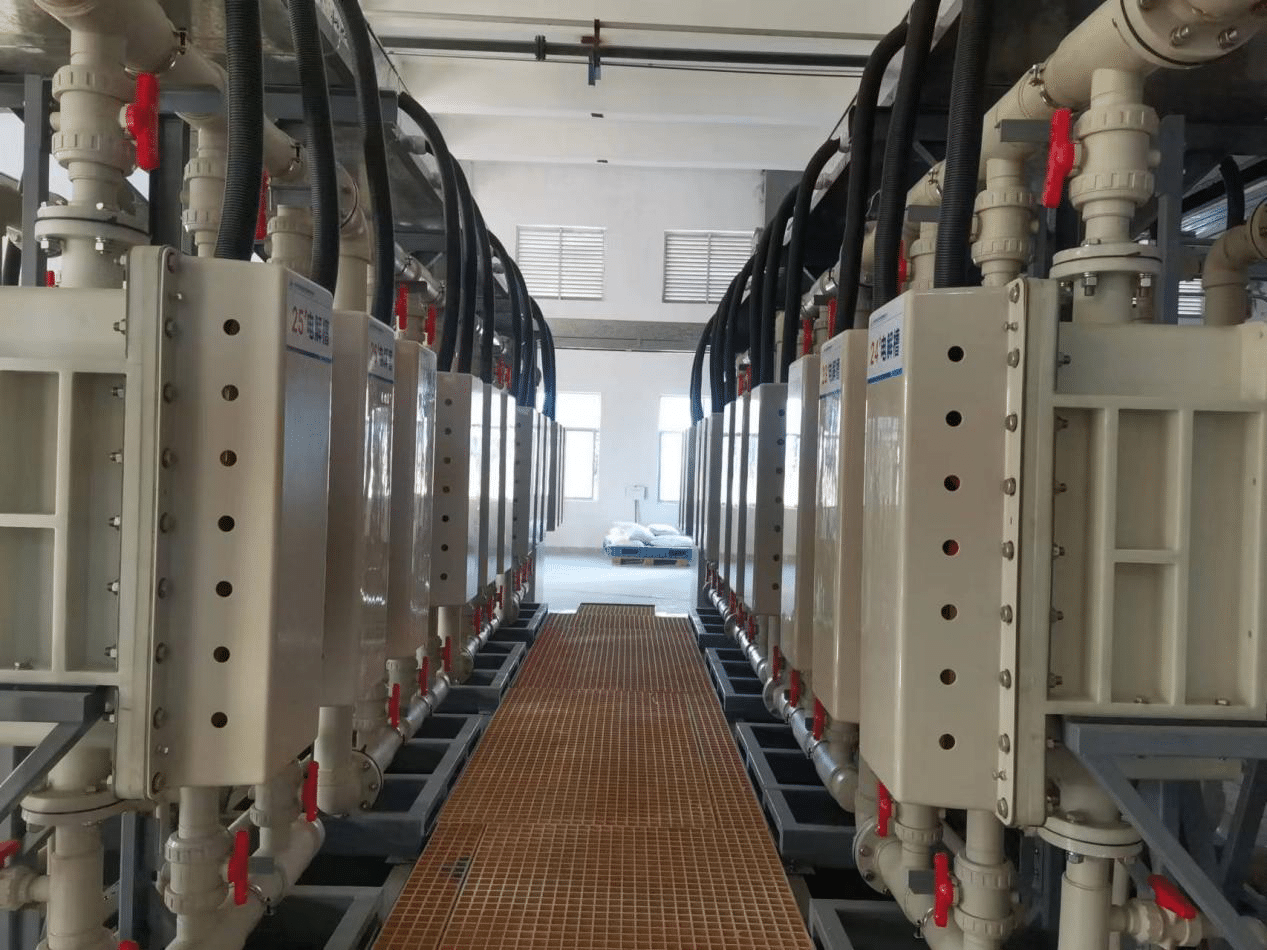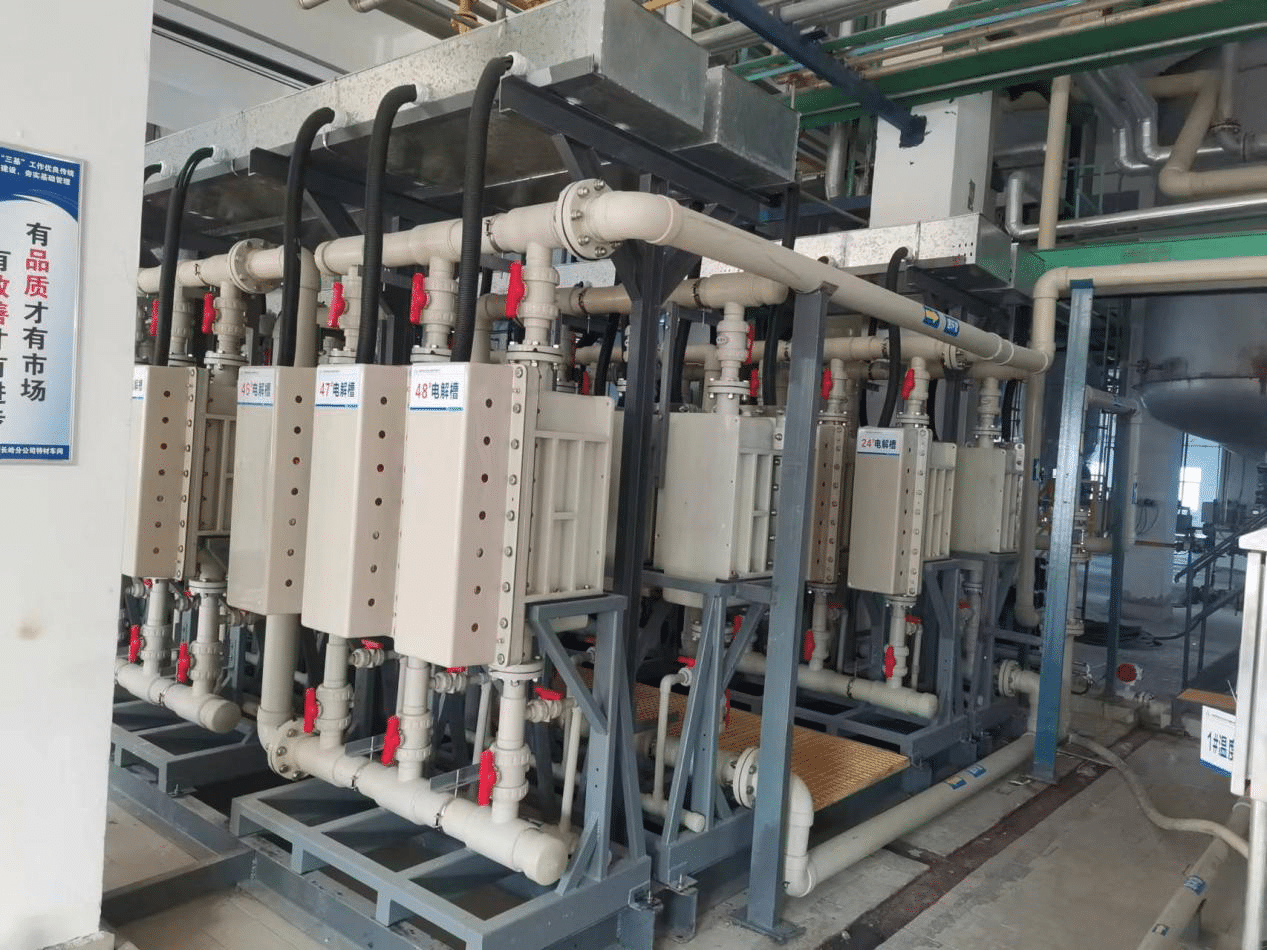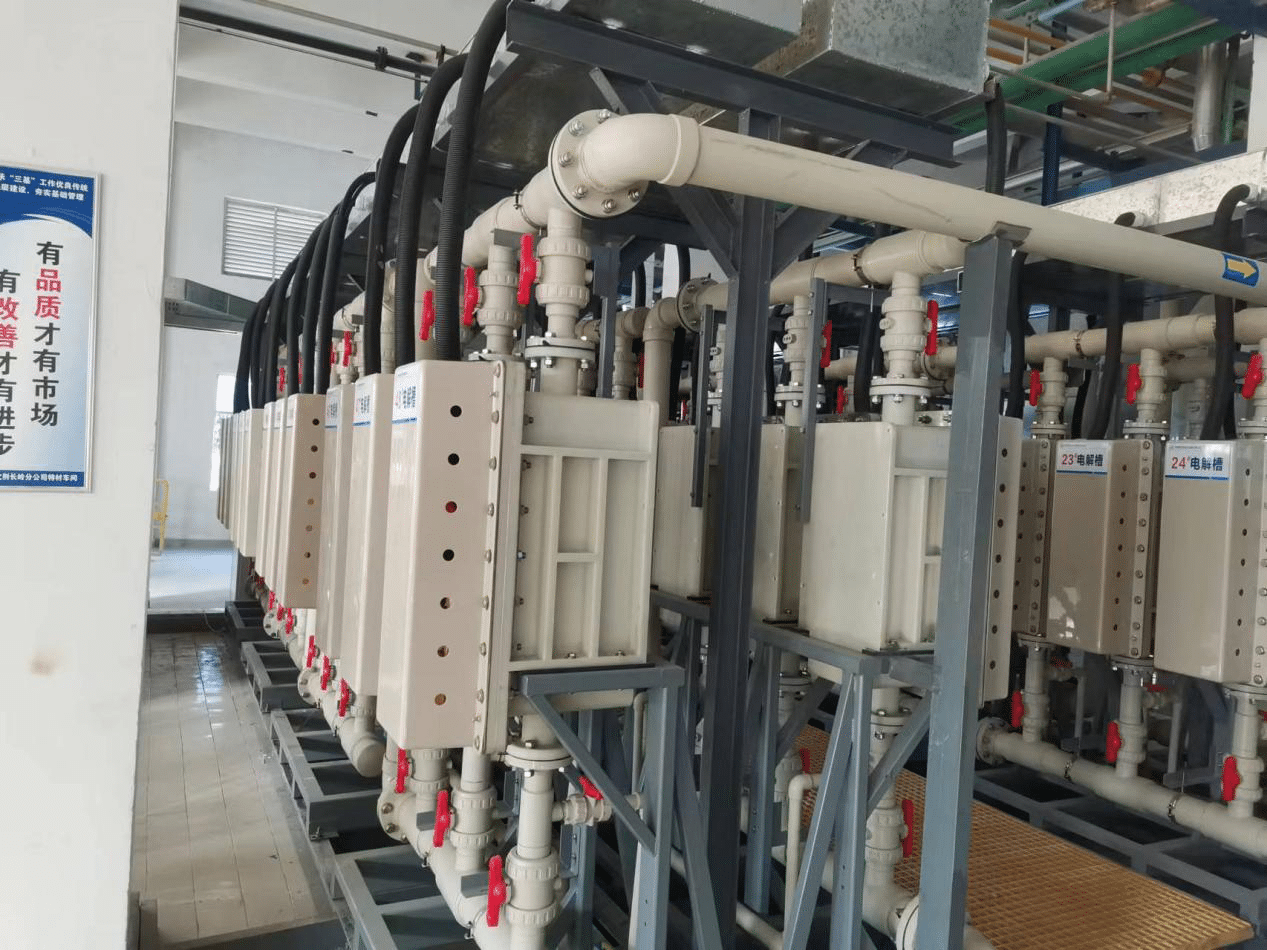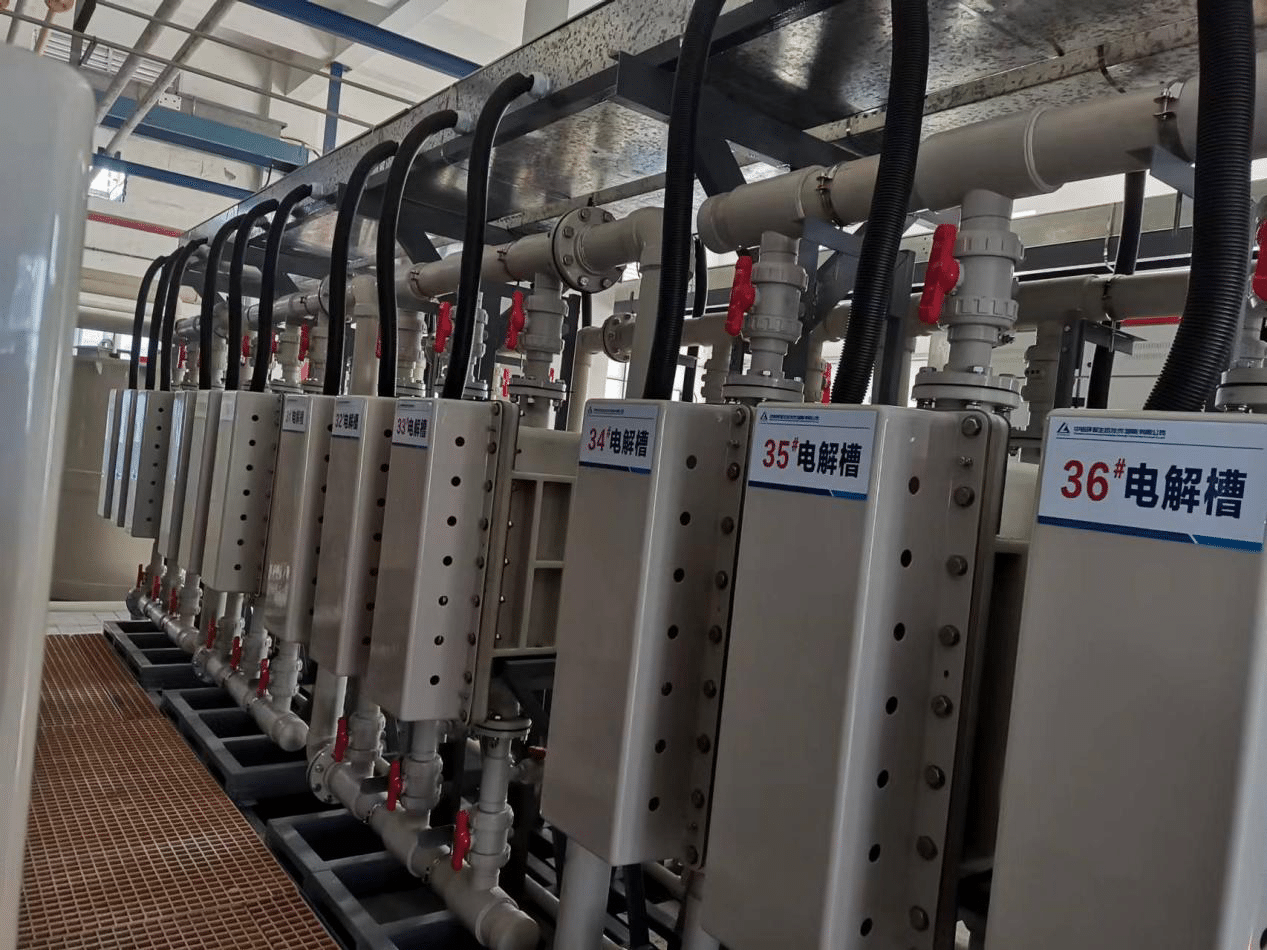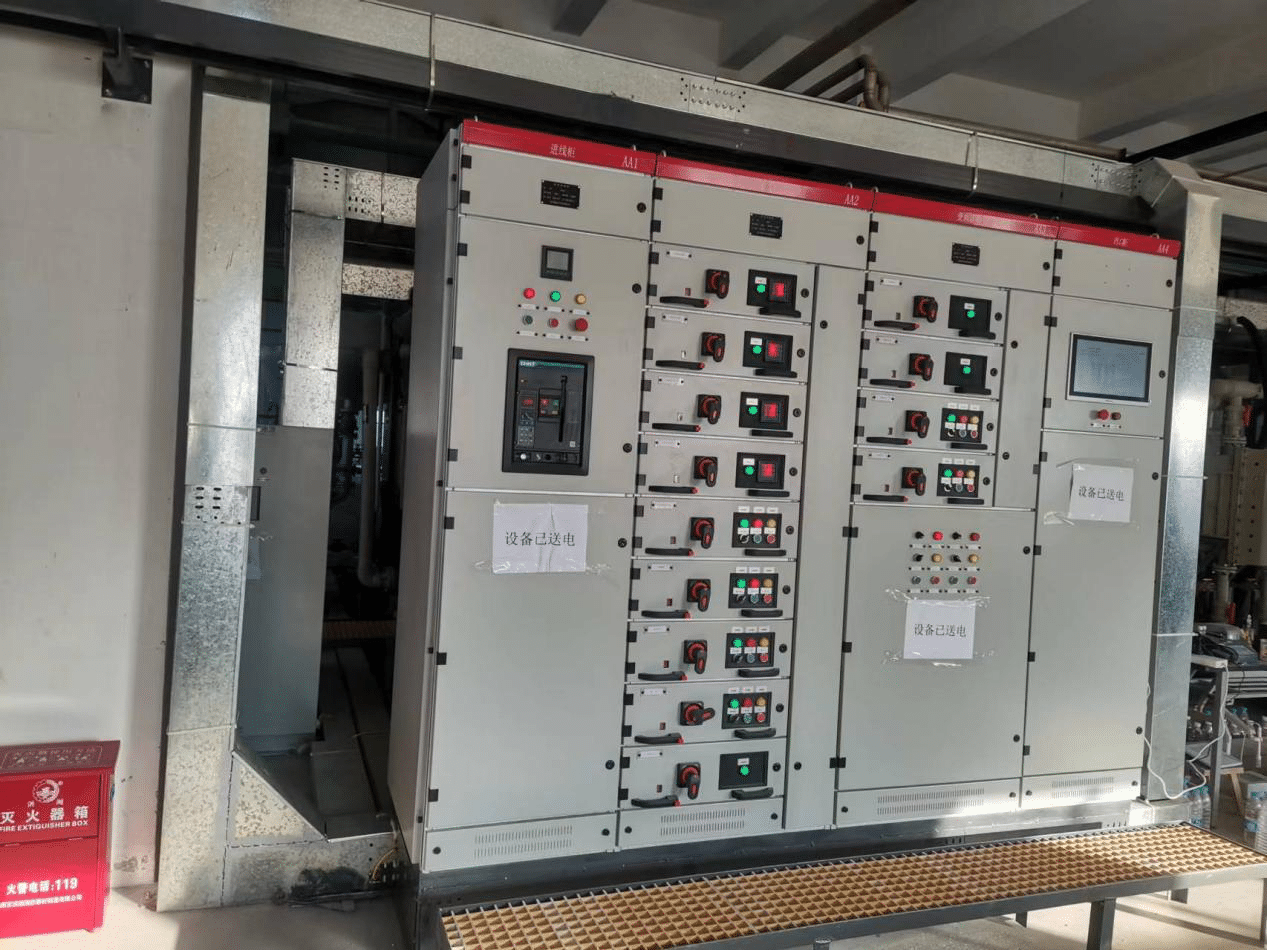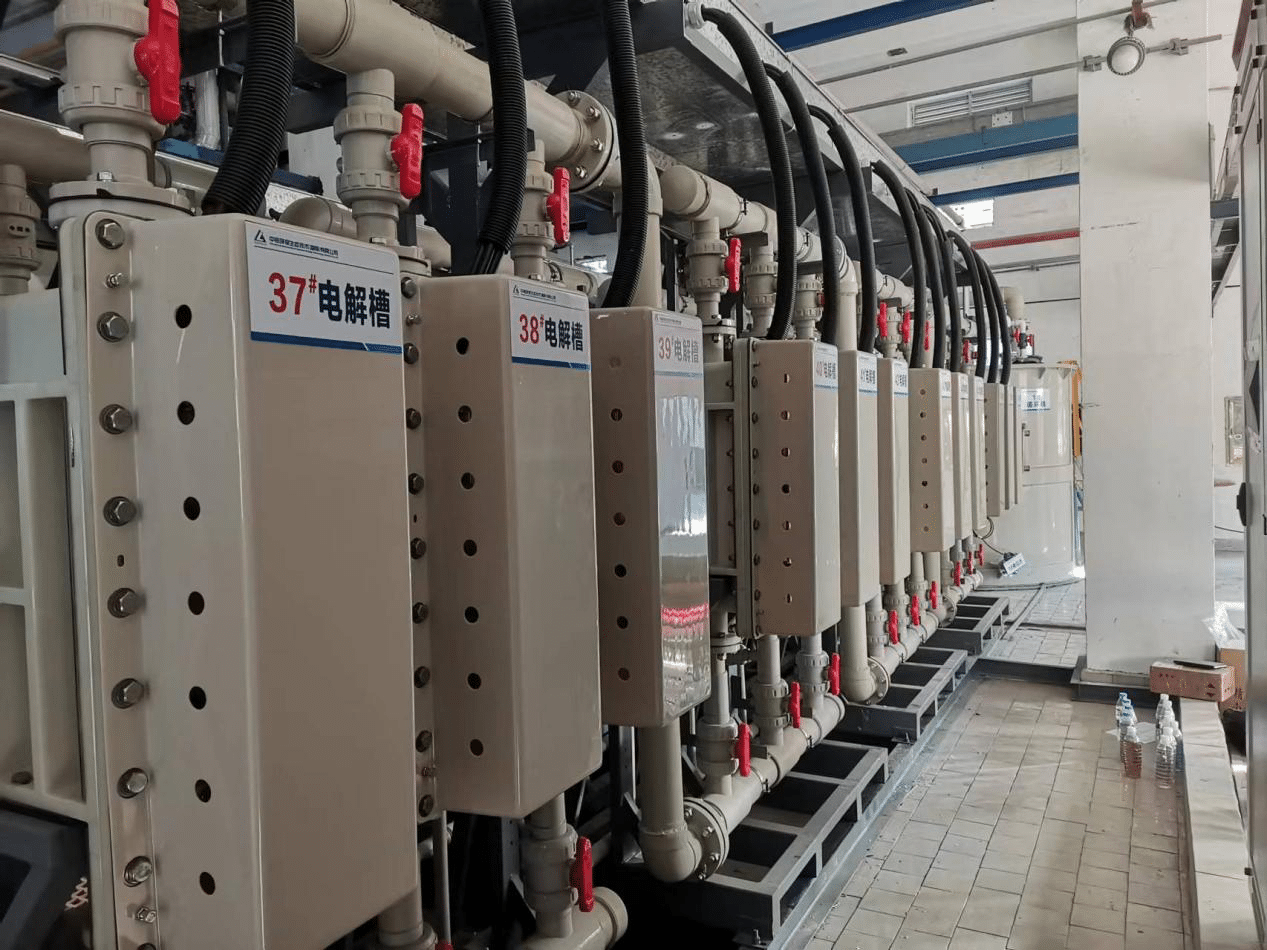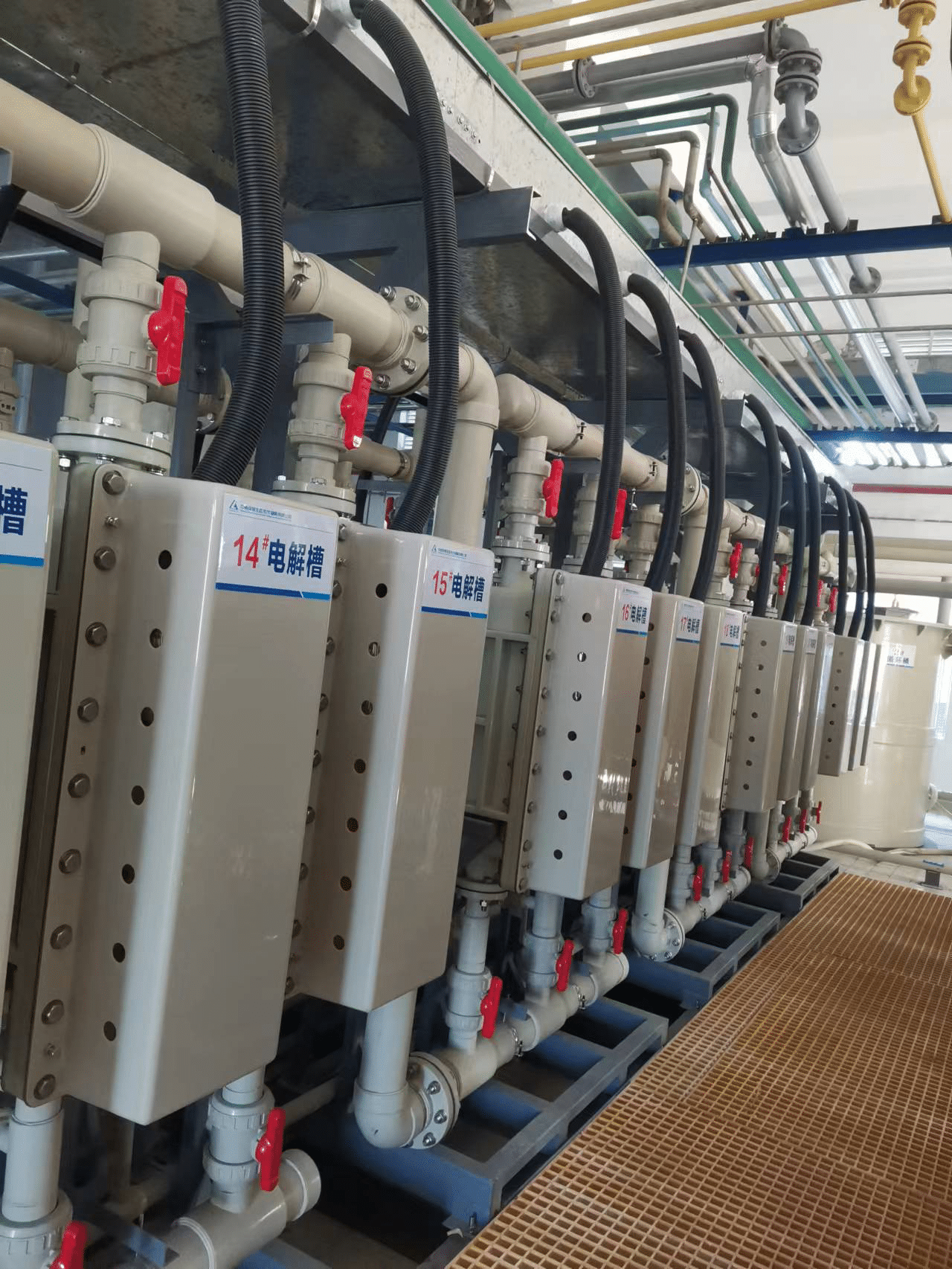29
06
Sinopec Catalysts Subsidiary: An Electrocatalytic Oxidation Project with BDD Integrated Treating Module
- Project Background
- Engineering Introduction
The oil and gas industry accounts for an estimated 3.95 × 107 m3 of water consumption per day during refining and petrochemical processing, equivalent to 15% of the world’s water use. Refinery wastewater contains a complex mixture of organic and inorganic pollutants that must be treated to meet environmental regulations before discharge into to waterways.
The composition of refinery wastewater varies based on plant configuration, operational procedures, and oil types processed but typically includes:
High levels of suspended solids, chemical oxygen demand (COD), and petroleum hydrocarbons.
Heavy metals such as lead, mercury, nickel, and vanadium.
Additional contaminants like benzene, phenols, cyanide, and sulfides.
The variable and hazardous nature of petroleum refinery wastewater poses challenges for conventional biological and physicochemical treatment. Advanced processes are needed to remove recalcitrant pollutants before discharge.
Petroleum refinery wastewater from this Sinopec refinery plant is surplus water (colored and colorless), ZIP filtrate, titanium silicon sewage wastewater, electrodialysis effluent, β filtrate,and the wastewater is high salt, high COD, difficult to degrade organic sewage.
Electrochemical oxidation using boron-doped diamond (BDD) anodes can effectively treat refinery wastewater. A flow reactor with BDD anodes was used to oxidize organics, with treatment efficiency assessed through measuring COD and solution turbidity.
BDD anodes successfully oxidized organics, BDD electrochemical oxidation can remove bio-refractory and toxic pollutants from petroleum refinery wastewater without generating unwanted byproducts. By enabling the use of simple electrolytes instead of hazardous chemicals, this sustainable approach avoids issues inherent to chemical-based treatment methods.
BDD electrochemical cells demonstrated promise for mitigating the significant environmental impacts associated with oil and gas operations. The effects of flow rate and current density on oxidation kinetics, current efficiency (CE), and energy consumption (EC) were examined in this case.
2.2 Scale of wastewater treatment
| Kind of wastewater | Designed treatment capacity | Estimate treatment capacity | |||
| Surplus water | ZIP filtrate | Titanium silicon sewage tank wastewater | Electrodialysis effluent | Mixed water | |
| Handling Capacity m3/d | 5 | 10 | 17 | 20 | 10 |
Note: The proportion of mixed water is roughly as follows: ZIP filtrate: titanium silicon sewage tank Sewage: electrodialysis effluent: surplus water =4:1:1:1
The main pollution discharge index monitored in this case is COD.
This project was equiped with 48 sets of BDD electrolyzer with working area up to 42 m2.
2.3 Requirements of designed inlet water quality
According to the preliminary design, the main inlet water quality control index limits are listed in the following table:2.3
Table 2.3-1 Inlet Water quality specifications of the system (pH is dimensionless, other units are mg/L)
| Kind of wastewater | Surplus water | ZIP filtrate | Titanium silicon sewage tank wastewater | Electrodialysis effluent | Mixed water |
| Raw water COD
(mg/L) |
<44000 | <18000 | <4000 | <3000 | <15000 |
Table 2.3-2 Other inlet water quality tables
| Index | Unit | Concentration |
| pH | / | 0.5-14 |
| Fluorine content | mg/L | <20 |
| Chlorinity | mg/L | <2000 |
| Bromine content | mg/L | <100 |
| SS | mg/L | <500 |
| Total Salt | mg/L | <saturated 70% |
| Silicon content | mg/L | <500 |
2.4 Requirements of designed effluent water quality
Table 2.4 Effluent quality requirements of advanced treatment system
| Index | Unit | Standard |
| Power consumption | RMB/ton sewage(44000mg/L of COD) | ≤576 |
| Power consumption | RMB/ton sewage(15000mg/L of COD) | ≤288 |
| COD | mg/L | ≤800 |
2.5 Process flow diagram
2.6 Operating cost.
The directly operating cost of this project is mainly composed of electricity.
- Electricity cost
When COD of influent water ≤30000 mg/L, power consumption per metric ton < 600KWh; The unit price of electricity is 0.6 RMB /kWh, and the cost of electricity consumption per ton of water is less than 360 RMB(Approximately $51.2).
When COD of influent water ≤15000 mg/L, power consumption per metric ton < 300KWh; The unit price of electricity is 0.6 RMB /kWh (Approximately $0.85), and the cost of electricity consumption per ton of water is less than 180 RMB(Approximately $25.6).
Photos:
